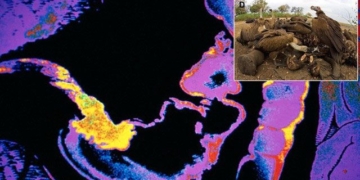A scholar has reported that the military camps used by the Assyrian king Sennacherib, known for his sieges of Lachish and Jerusalem detailed in the Hebrew Bible, have finally been identified.
At the time of these sieges around 701 BC, the Assyrians controlled a rapidly expanding empire that stretched from the Persian Gulf to the Mediterranean Sea.

An Assyrian relief depicting the camp used by the Assyrians during the siege of Lachish. (Image: Stephen Compton).
The Sieges of Lachish and Jerusalem are frequently mentioned in the Hebrew Bible and are believed to have concluded in Jerusalem when the “angel of the Lord killed one hundred eighty-five thousand in the Assyrian camp.”
However, ancient Assyrian inscriptions tell a different story, claiming that Hezekiah, the king of Judah, paid tribute to persuade the Assyrians to withdraw.
The Siege of Lachish
At the British Museum in London, there is a relief depicting the siege of Lachish and showcasing the Assyrian camp. Stephen Compton, an independent scholar specializing in Near Eastern archaeology, compared this relief with photographs of Lachish taken from the early to mid-20th century. He identified a location to the north of Lachish with an oval structure and walls that he believes may have been the Assyrian camp.
Compton notes that Assyrian camps tended to be oval in shape. The proposed Arabic name for the campsite is “Khirbet al Mudawwara,” and during the Middle Ages, the term “Mudawwara” may have referred to a place where a king pitched a military camp. This suggests that those living in this area later recognized that the ancient Assyrians had used it as a camp.
Additionally, an archaeological survey conducted in the early 20th century uncovered remnants of pottery dated to the time of Sennacherib’s siege of Lachish.


















































